Much like the ebb and flow of the sea, many handcrafts surge and recede in popularity. Today there is a high level of interest in the art of felting, but in reality this craft goes back as far as the history of man. Asian nomads used felt for their tents, their clothing and their floor coverings. Brides got married while sitting on a cloth of white felt, animals were sacrificed on a felt blanket, and Mongolian horsemen hung felt figures inside their tents to bring them good luck and ward off evil.
Felt in the traditional sense consists of wool or animal fibers that, when washed in hot water, shrink and lock together to form a sturdy, thick fabric. This is known as wet felting.The fabric can be cut without the edges unraveling, and is relatively resistant to moisture. This makes felt perfect for domestic uses such as hats, coats, shoes, blankets and much more.
Today artists can take wool roving (yarn that has not yet been twisted or spun into strands) and felt it with their hands using hot water and soap. When the wool is laid out in layers going in different directions, and those layers are rubbed or agitated, this causes the barbs of the wool fibers to grab onto each other and permanently interlock. When you crochet or knit with wool yarn, and then wash the final product on a hot cycle in the washing machine, you are doing essentially the same thing, except that this is known as fulling. Cutting up wool garments and shrinking them in the washer is also fulling. Sometimes artists will combine synthetic (acrylic or nylon) or plant-based (cotton, linen or hemp) fibers with animal fibers, but the best fulling results take place with protein-based animal fibers. Traditionally felt is created from sheep wool, but technically you could full fibers from rabbits, cats, dogs or even your own hair.
Needle felting is the commercial answer to dry felting, or interlocking wool fibers without the use of water. Barbed needles puncture wool fibers repeatedly, causing them to interlock. Fabric can be formed in this way, and fibers can be permanently attached to other fabrics as well. Needle felting can be accomplished both by hand, or with a special sewing machine tool. Clover makes a range of hand needle felting tools that are available in many fabric and craft stores. Commercial felting machines like Baby Lock‘s Embellisher or Nancy’s Notions Fab Felter speed up the needle felting process considerably.
Boomer artists have explored both wet and dry felting, producing a wide range of products. Chrissie of makeyourpresentsfelt, for example, has created this adorable Felted Egg Cosy.
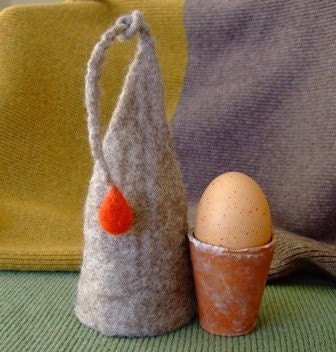
Check out this lovely Needle Felted Daisy Brooch by Lori of DreamWhimsey.
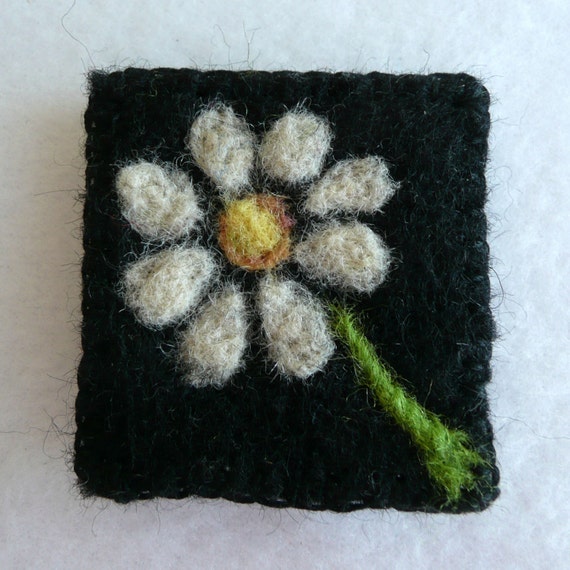
Sue of Felt4Ewe wet felted this beautiful Inlaid Flowers Hat.

Evelyn of creationsbyeve utilized hand felting to produce her Purple Dahlia Bag.
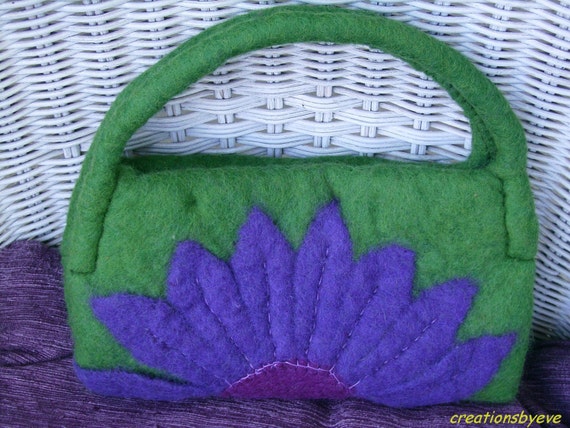
Nothing could be closer to the traditional wet felting tools of soap and water than Cross My Heart Felted Soap, created by Kimberly of thewildhare.

While Carol of SandFibers is usually known for her beaded creations, this Fiesta Swirls Felted Cuff features needle felting.
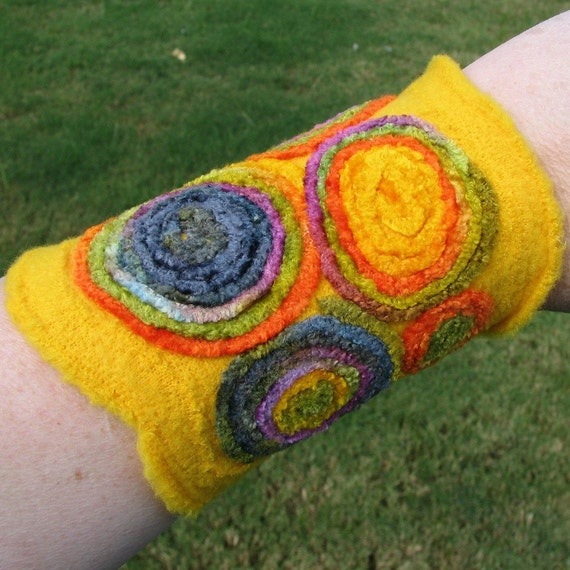
Liz of lizplummer made the foundation felt of her Cocoon Small Textile Wall Hanging by hand.
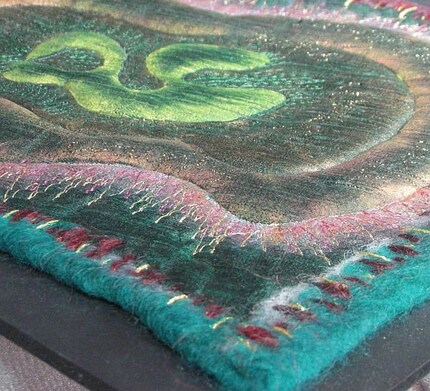
To learn more about the art of felting, you may wish to explore the following books:
- Crocheted Pursenalities: 20 Great Felted Bags, by Eva Wiechmann
- Fast Fun & Easy Needle Felting: 8 Techniques & Projects–Creative Results in Minutes, by Lynne Farris
- Felted Crochet: Bags, Pillows, Bowls, Hats, Throws, by Jane Davis
- Not Your Mama’s Felting: The cool and creative way to get it together, by Amy Swenson
- Pursenalities: 20 Great Knitted and Felted Bags, by Eva Wiechmann
- Quick & Clever Felting: Over 30 Stylish Projects Using Felt Applique, Needle Felting, Wet Felt and Other Easy Techniques, by Ellen Kharade
- The Embellisher: Let’s Get Started! by Myfanwy Hart
- Warm Fuzzies: 30 Sweet Felted Projects, by Betz White
© 2008 Judy Nolan. All rights reserved. Please note that the images in this post are owned by the artists and may not be used without permission. Simultaneously published at http://boomersandbeyond.blogspot.com.

this is a great explanation! I’m going off to look at some of the products and books. Thanks a lot! {:-D